Last updated: May 16, 2025
Article
Explore Careers: Yellowstone National Park 2020 #WhatWeDoWednesdays
Are you curious about the people who work in Yellowstone National Park?
We began highlighting the diversity of work done by Yellowstone employees in our #WhatWeDoWednesdays social media campaign. From designing exhibits, to monitoring hydrothermal features, to researching cougars, there are many types of positions that help preserve the park's natural and cultural resources for the enjoyment, education, and inspiration of this and future generations.
Learn more about the variety of work park employees accomplish below and view current open positions in Yellowstone.
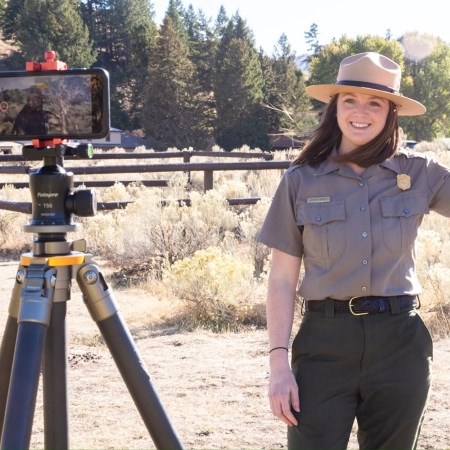
Building our Online Community
Did you know Yellowstone has over 3 million combined social media followers from around the world?
Park employees like Ashton create and share content about park resources, current conditions, employees, incidents, and projects with the intent of building a vibrant virtual community of stewards and providing opportunities for people to interact with park employees and each other.
“Sure, sharing pretty pictures is fun, but we also strive to engage in dialogue and foster stewardship through social media campaigns like the Yellowstone Pledge. By highlighting the park from many perspectives, we hope to help you discover your own connection to Yellowstone!” – Ashton Hooker, Digital Communications Specialist
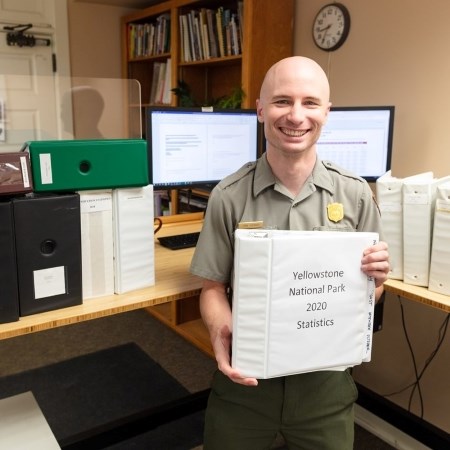
Calculating Entrance Station Stats
Did you know Yellowstone keeps track of how many people visit the park each year?
Park employees like Evan use the information gathered to produce monthly reports, which help inform management decisions ranging from how many people we hire each summer to updating infrastructure to accommodate increased visitation. Knowing how many people visit the area also helps us understand how big of an economic impact Yellowstone has on local communities.
"It's interesting to look at the data for trends. For example, the first year we started collecting data in 1904, we had about 14K visits. Compare that with out busiest year (2016) of 4.26M, and it's a 31K% increase. It took 76 years to hit 1M visits in a single year, but only 17 more to hit 2M, 27 more to hit 3M, and 23 more to hit 4M." - Visitor Services Technician Evan Hubbard
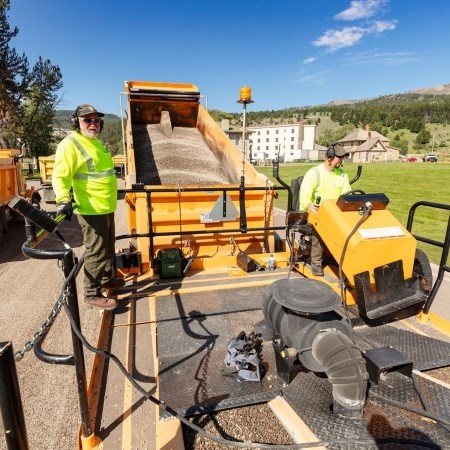
Chip Sealing
Did you know Yellowstone resurfaces about 30 miles of roads each summer in addition to major infrastructure improvement projects?
Over 14 million pounds (7,000 tons) of "chips" were sealed to road surfaces using 128,000 gallons of chip seal oil last summer. By extending the time between asphalt overlays, chip seals result in lower costs to maintain park roads over the long term.
"Chip seals enhance safety by providing good skid resistance, which is great for a place with so much wildlife on the roads. They also prevent deterioration of the asphalt surface from the effects of aging and oxidation due to water and sun." - Roads Supervisor Marty Powell
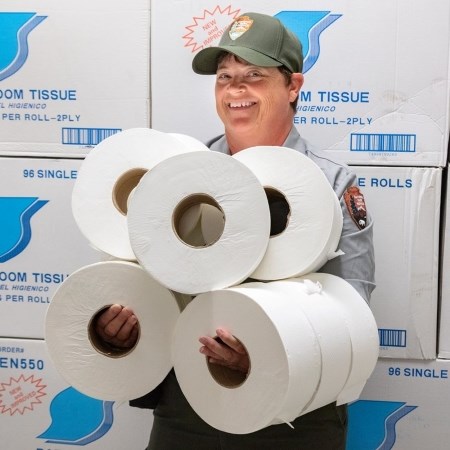
Cleaning and Stocking Restrooms
Did you know Yellowstone cleans and services 422 toilets every day during the summer?
With over 4 million visits, employees like Lisa stock park restrooms with 3,500+ miles of toilet tissue each summer - roughly the distance from Key West to Seattle.
"Keeping everything cleaned during the summer can be a challenge, especially at the most popular restrooms in the park. I just put on a smile and roll with it." - Custodial Worker Lisa Bush

Counting Fees
Did you know Yellowstone takes in over $16M in fees annually?
Whether it’s for a Junior Ranger booklet, entrance fee, or backcountry permit, every dollar collected comes across the remit desk of employees like Pat and Cheryl. Acting as each other’s “accountabili-buddies,” together they recount and report every cent from the 10,000 till shifts they receive.
“When there are hiccups in the software or connectivity issues, it’s our job to act as financial detectives and sort things out.” – Pat Moran and Cheryl Gallagher, Tellers
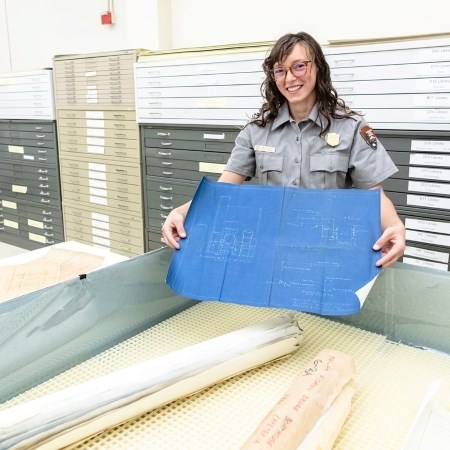
Digitizing Maps
Did you know Yellowstone is digitizing historic maps, plans, and architectural drawings from the museum collection?
Many of the maps arrive to the Heritage and Research Center after years of being rolled up with a rubber band, so the first step in the process is to flatten them. Employees like Kimberlee will place pieces into a humidification chamber to relax the fibers enough so they may be mechanically flattened, dried, digitally scanned, and then stored flat in a drawer for archival purposes.
“This is such a cool project to be a part of. The beauty and particularities of these maps are what make them a unique treasure to Yellowstone, and now they’re available from anywhere.” – Kimberlee Roberts, Archives Technician

Emergency Dispatching
Did you know Yellowstone has a special team of dispatchers to handle wildland fire, major search and rescue, and aviation activity in the park?
When the 2020 Lone Star Fire was first reported, employees in the Emergency Operations Center (EOC) like Ed coordinated the aircraft involved in sizing up the fire, worked to locate and evacuate backcountry campers, and ordered the resources to manage the fire.
"The variety of situations I get to be a part of as a dispatcher makes the work exciting. In a single week, I will work with Life Flights, air tankers, neighboring dispatch centers, wildlife tracking flights, smokejumpers, as well as our own park's firefighters, search and rescue responders, ambulances, and rangers." - EOC Dispatcher Ed Folts
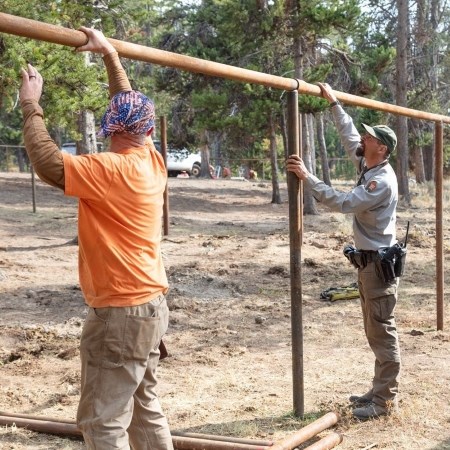
Hosting Park Volunteers
Did you know Yellowstone hosts nearly 3,000 volunteers each year?
Individuals and organized groups contribute to a combined yearly total of 80,000+ hours valued at $4.8 million in various ways. Some groups like Warfighter Outfitters have long-term relationships with the park, and rangers like Michael work alongside combat veterans to remodel barns, re-roof backcountry patrol cabins, and build horse corrals. In total, nearly 300 servicemen and women from the organization have contributed 190,000+ hours of volunteer labor since 2009.
“It’s a privilege to work alongside these groups of men and women that continue to serve their country. Not only do they get to explore the park while they are here, they head home knowing their work will leave a lasting fingerprint on the park for generations to come.” – Michael Curtis, Park Ranger
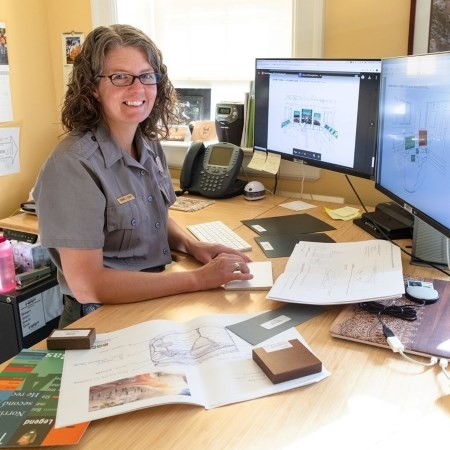
Maintaining Exhibits
Did you know Yellowstone takes the lead in writing, designing, and maintaining over 300 outdoor exhibits and 10,000+ square feet of indoor exhibit space?
Park employees like Bianca work with contractors, researchers, park partners, and park subject-matter experts to encourage visitors to learn something new each time they visit with engaging and up-to-date exhibits.
"My role is to help bring Yellowstone's rich cultural and natural history to life for all who visit. Thanks in great part to partner funding, we're able to provide site-specific interpretation of park resources throughout the park. It's always incredibly fulfilling to see people inspired by one of the park's many exhibits." - Exhibit Specialist Bianca Klein
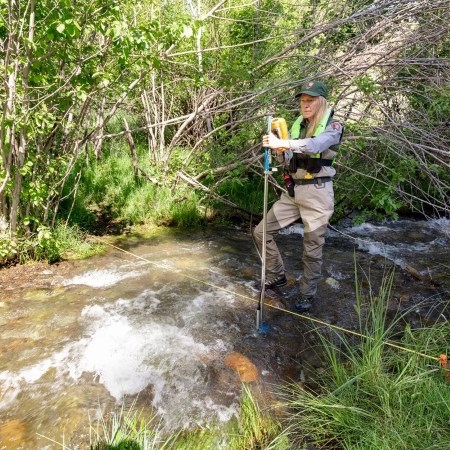
Measuring Streamflows
Did you know scientists have been routinely measuring streamflows within Yellowstone since the 1880's?
Streamflow (discharge) is the volume of water that moves past a reference point over a period of time. This data helps answer management questions related to water availability, water quality, ecological conditions, infrastructure design and maintenance, hazards, climate change, and water rights. It also lets visitors know when it’s time to pull out their fishing rod and waders each year.
“Taking streamflow measurements is comparable to taking the pulse of a river. It’s rewarding to think about how the pulses measured in a small wadable creek or river in the park will be propagated downstream and affect the ecological conditions of a nationwide river network. Water not only touches every aspect of our resources and operations in Yellowstone, it moves across the park boundaries and impacts communities and ecosystems several thousand miles away.” - Park Hydrologist Erin White
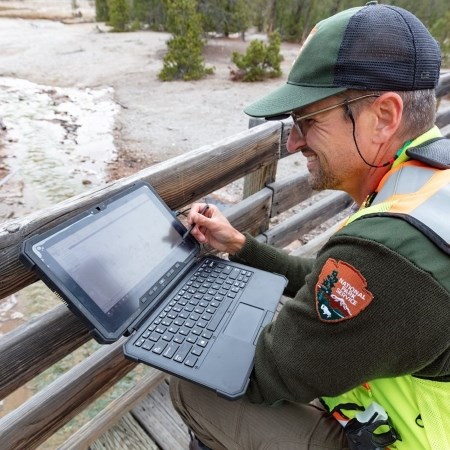
Monitoring Hydrothermal Features
Did you know Yellowstone monitors the temperatures of hydrothermal features?
Employees like Mark deploy and maintain an array of thermistor (temperature) data loggers often placed in the near-boiling, acidic runoff channels of hot springs and geysers across the park. The data collected over time is analyzed for patterns, which help us determine a variety of things like eruption intervals or if nearby features may be connected underground.
“It’s interesting to see how hydrothermal activity in certain features change over time. We’re always learning something new, and sharing that information with folks I meet on the boardwalks is one of my favorite parts of the job.” – Mark Wolf, Physical Science Technician
Learn more about the Yellowstone Volcano by visiting the Yellowstone Volcano Observatory.
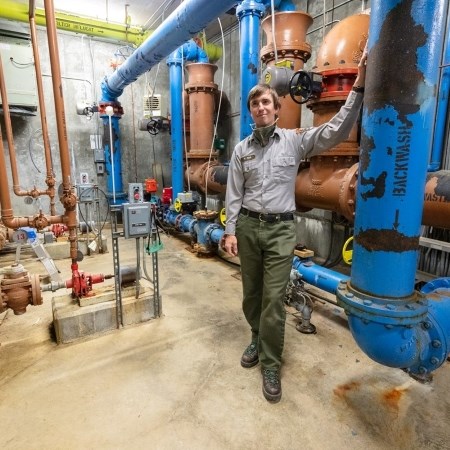
Operating Water Treatment Plants
Did you know Yellowstone maintains and operates 23 water treatment plants?
They range from large frontcountry operations in areas like Mammoth Hot Springs, Canyon, and Old Faithful to rustic, hand-operated well pumps in remote backcountry outposts. On a normal summer day in Mammoth Hot Springs, certified utility operators like Rafal work to produce and distribute (via gravity) about 350,000 gallons of clean tap water for the 352 homes, office buildings, and lodging in the area.
"I'm honored to be a member of the team that provides our community with such a vital need. The job requires not just the ability to perform calculations and solve problems, but also integrity and a strong sense of duty. You have to show up every day with the public in mind." - Utilities Operator Rafal Kos
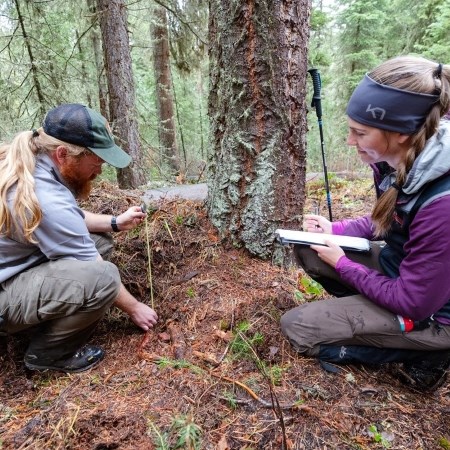
Partnering with Universities
Did you know Yellowstone has partnered with Montana State University to study what grizzly bears eat?
While meat is important to grizzlies, most of their diet consists of plants. In 1982, Yellowstone instituted Bear Management Areas (BMA) to restrict human access to areas thought to hold good food resources for grizzly bears. Today, biologists use GPS collars to assess when, where, and most importantly, what grizzlies are eating to ensure BMA's still encompass areas with good food resources.
“Collecting scat tells us a lot about a bear’s diet. When we combine our current data with previous studies, we start to get a better picture of why grizzlies spend time and what foods they utilize in different areas of the park.” –Elise Loggers, Graduate Student
Learn more about grizzly bears in Yellowstone and the diverse stakeholder interests and issues in grizzly bear management by checking out our featured bear publication.
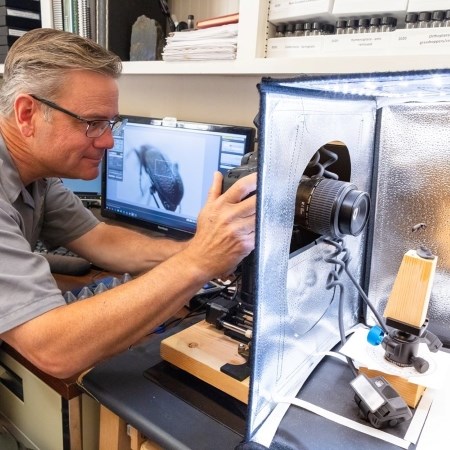
Photographing Bugs
Did you know Yellowstone maintains a macro photography collection of insects?
Employees like Erik use specialized equipment and software to create extreme high-resolution images of insects collected as part of the Yellowstone Climate Monitoring Program. These photos are used to help researchers identify specimens down to the species level, while also giving everyone a closer look at Yellowstone's often-overlooked charismatic microfauna.
"We research insects because they are short-lived, sensitive environmental indicators of ecological health. By documenting the diversity and abundance of several poorly studied groups like beetles, grasshoppers, and ants, we gain a better understanding of the critical ecosystem services they provide, like pollination and nutrient cycling." - Biologist Erik Oberg
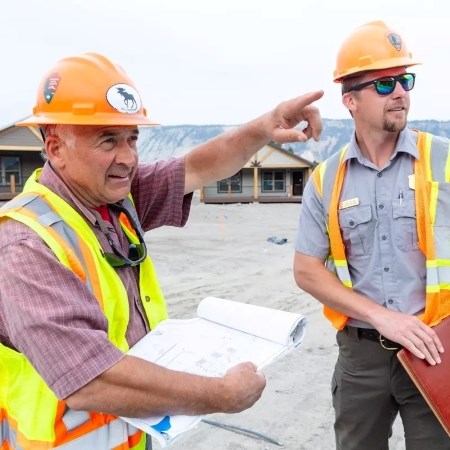
Replacing Outdated Trailers
Did you know Yellowstone is improving employee housing across the park?
Our ability to attract and retain talent in Yellowstone is strongly tied to the availability and affordability of housing options in and around the park. As part of the park’s Strategic Priorities, the first goal of the project is to replace 64 outdated trailers in poor condition from the ‘70s and ‘80s with high-quality modular homes. Employees like Kyle work with contractors on every aspect of the project including removing old trailers, new home and site design, off-site construction, site development, modular transport, on-site assembly, and quality control.
“This project is the first of its kind in the National Park Service. Using modular versus on-site construction means we can build more units, in less time, with lower costs, more sustainably.” –Kyle Stone, Civil Engineer
Learn more about the Housing Improvement Project.
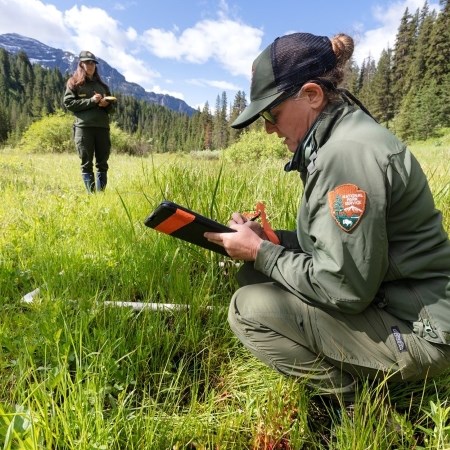
Restoring Wetlands
Did you know Yellowstone restores wetlands in the park?
When roads are updated, park employees like Heidi coordinate with the Federal Highway Administration to document existing roadside wetlands, determine how future road projects will impact them, and propose how to mitigate those impacts by restoring other disturbed wetlands of the park.
"Restoring wetlands means protecting my two favorite things, water and plants. I’ve worked in Yellowstone since 2002 and I’m still amazed by the diversity and frequency of wetlands on the landscape. It’s not at all a dry place." – Heidi Anderson, Wetland Ecologist
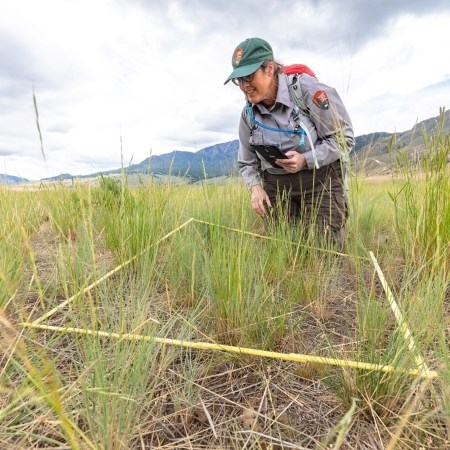
Studying Native and Invasive Plants
Did you know Yellowstone has a vegetation monitoring program?
Scientists like Stefanie inventory, monitor, manage, and conduct research on the 1,386 native plant species and 225 non-native plant species documented in the park. This program allows us to see increases or decreases of invasive species and their impact on native flora, as well as the effects of climate change.
"Most visitors come to see the iconic wildlife and geysers that make Yellowstone famous, but what would that visit be like without the beautiful wildflowers, the towering trees, and the sea of sagebrush that make the valleys so spectacular? Plants provide food and habitat for all manner of wildlife from bison to insects, wolves to birds. I love the diversity and beauty of plants and the intricate role they play in the ecosystem; they make me smile every day." - Vegetation Ecologist Stefanie Wacker
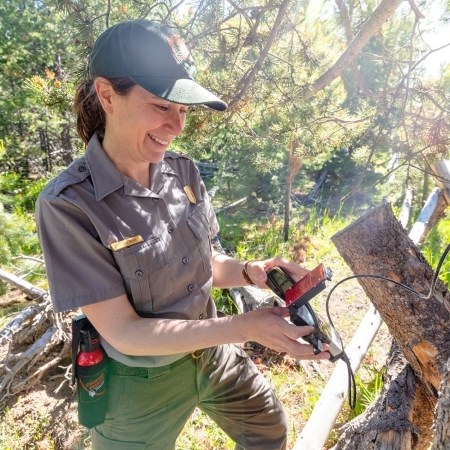
Studying Visitor Use
Did you know Yellowstone researchers study people in the park?
Park staff like Jenni use a variety of tools, including trail counters, to learn more about visitation in popular areas of the park. While these trail counters might look like small cameras, they actually collect data by detecting body heat as people pass by them on a trail. This data helps us understand when sites are most crowded, how trail use changes throughout the year, and ultimately informs park management when making decisions regarding visitor use at a site.
"When visitors see us in the park and ask what we are studying, they are often surprised to learn that it is them. Sometimes they suggest people must be boring subjects. Far from it - people are fascinating! I find it rewarding to collect information that helps to both improve the visitor experience and protect park resources." – Outdoor Recreation Planner Jenni Burr
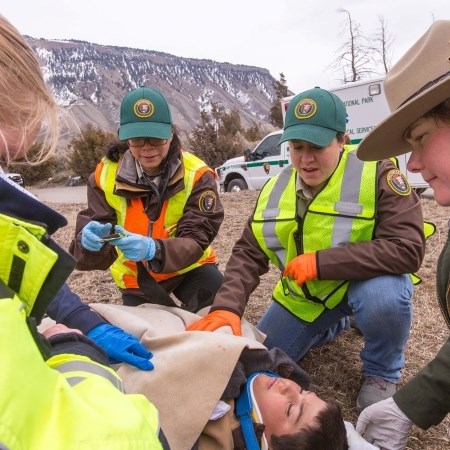
Training for Medical Emergencies
Did you know Yellowstone coordinates with local community first responders to create life-like simulations, like a bus rollover, to prepare for potential medical emergencies?
Park employees like Tim use these training scenarios to understand the way our partners operate, learn how to cooperate effectively, and identify and solve problems before a real emergency happens.
"These trainings are valuable since we don't respond to real incidents of this magnitude on a frequent basis. Exposing ourselves to a realistic, dynamic scenario is a great way to prepare for a real incident. The body can't go where the mind hasn't already been." - District Park Ranger Tim Townsend

Updating Non-Historic Housing
Did you know Yellowstone is improving employee housing across the park?
Our ability to attract and retain talent in Yellowstone is strongly tied to the availability and affordability of housing options in and around the park. As part of the park’s Strategic Priorities, the second goal of the project is to improve the condition of non-historic housing. Craft shop employees like Boyd are working on a range of updates, including roofing and siding replacements, improved insulation and heating systems, and new floors, cabinets, and appliances.
“When your coworkers are the people living in the houses you’re working on, you really want to make sure you bring your A-game. Living in a remote place like Yellowstone, it’s important we take care of each other!” –Boyd Tippets, Carpenter
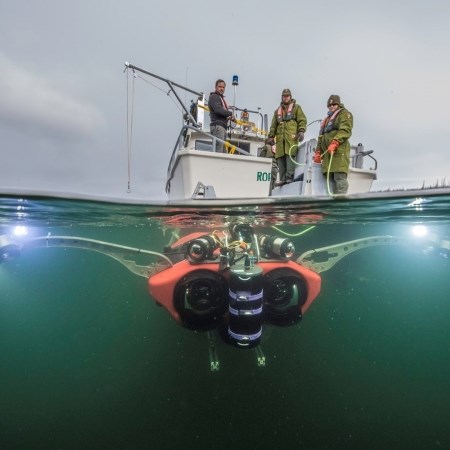
Using Underwater Remotely Operated Vehicles
Did you know Yellowstone uses an underwater remotely operated vehicle to study the spawning habits of invasive lake trout in order to eradicate them?
Park scientists locate spawning beds deep in Yellowstone Lake by tagging select "Judas fish" with radio transmitters and tracking their movements. Once we know where they spawn, employees from the NPS Submerged Resources Center like Dave Conlin dive in to document the spawning beds with photos and video.
"Diving in the lake is cold and difficult. Water temperatures can be near freezing. That means you wear thermal protection under your drysuit and a lot of lead weight to offset it. Climbing into the boat with all that weight at an elevation of 9,000 feet leaves everyone gasping for air. But it's 136 square miles of the park that few get to experience above the water, let alone dive in." - Dave Conlin, Submerged Resources Center Chief
